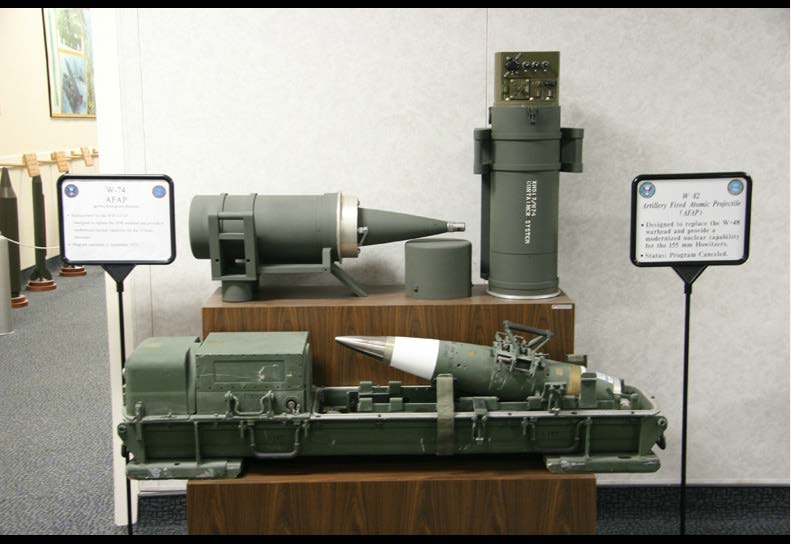W82 on:
[Wikipedia]
[Google]
[Amazon]
 The W82 (also known as the XM785 shell) was a low-yield tactical nuclear warhead developed by the United States and designed to be used in a
The W82 (also known as the XM785 shell) was a low-yield tactical nuclear warhead developed by the United States and designed to be used in a
Swords of Armageddon
U.S. Nuclear Weapons Development since 1945" (CD-ROM & download available). PDF-2.67 Mb. 2,600 pages, Sunnyvale, California, Chucklea Publications, 1995, 2007. (2nd Ed.)
A photo of a W82 shell
Nuclear warheads of the United States Linear implosion nuclear weapons Nuclear artillery {{nuclear-weapon-stub
 The W82 (also known as the XM785 shell) was a low-yield tactical nuclear warhead developed by the United States and designed to be used in a
The W82 (also known as the XM785 shell) was a low-yield tactical nuclear warhead developed by the United States and designed to be used in a 155 mm
155 mm (6.1 in) is a common, NATO-standard, artillery caliber. It is defined in AOP-29 part 1 with reference to STANAG 4425. It is commonly used in field guns, howitzers, and gun-howitzers.
Land warfare
The caliber originated in France after ...
artillery shell. It was conceived as a more flexible replacement for the W48
The W48 was an American nuclear artillery shell, capable of being fired from any standard howitzer. A tactical nuclear weapon, it was manufactured starting in 1963, and all units were retired in 1992. It was known as the XM454 AFAP (artillery ...
, the previous generation of nuclear artillery
Nuclear artillery is a subset of limited- yield tactical nuclear weapons, in particular those weapons that are launched from the ground at battlefield targets. Nuclear artillery is commonly associated with shells delivered by a cannon, but in ...
shell. A previous attempt to replace the W48 with the W74 munition was canceled due to cost.
Originally envisioned as a dual-purpose weapon, with interchangeable components to allow the shell to function as either a ''standard'' fission explosive or an '' enhanced radiation'' device, the warhead was developed at Lawrence Livermore Laboratory
Lawrence Livermore National Laboratory (LLNL) is a federal research facility in Livermore, California, United States. The lab was originally established as the University of California Radiation Laboratory, Livermore Branch in 1952 in response ...
starting in 1977. The eventual prototype round had a yield of in a package long and weighing , which included the rocket-assisted portion of the shell. The unit cost of the weapon was estimated at million. Although enhanced radiation devices were considered more effective at blunting an invasion due to the high neutron flux they produce, the more complex design eventually led to the cancellation of the dual-purpose W-82-0 program in 1982. Development of a ''standard'' weapon, the W-82-1, was restarted in 1986. The program was finally cancelled in 1991 due to the end of the Cold War
The Cold War is a term commonly used to refer to a period of geopolitical tension between the United States and the Soviet Union and their respective allies, the Western Bloc and the Eastern Bloc. The term '' cold war'' is used because the ...
.
Design
The shell used a body made from titanium and a copper rotating band. A special process was developed to bond the rotating band to the titanium body of the shell.References
Further reading
* Hansen, Chuck,Swords of Armageddon
U.S. Nuclear Weapons Development since 1945" (CD-ROM & download available). PDF-2.67 Mb. 2,600 pages, Sunnyvale, California, Chucklea Publications, 1995, 2007. (2nd Ed.)
External links
A photo of a W82 shell
Nuclear warheads of the United States Linear implosion nuclear weapons Nuclear artillery {{nuclear-weapon-stub